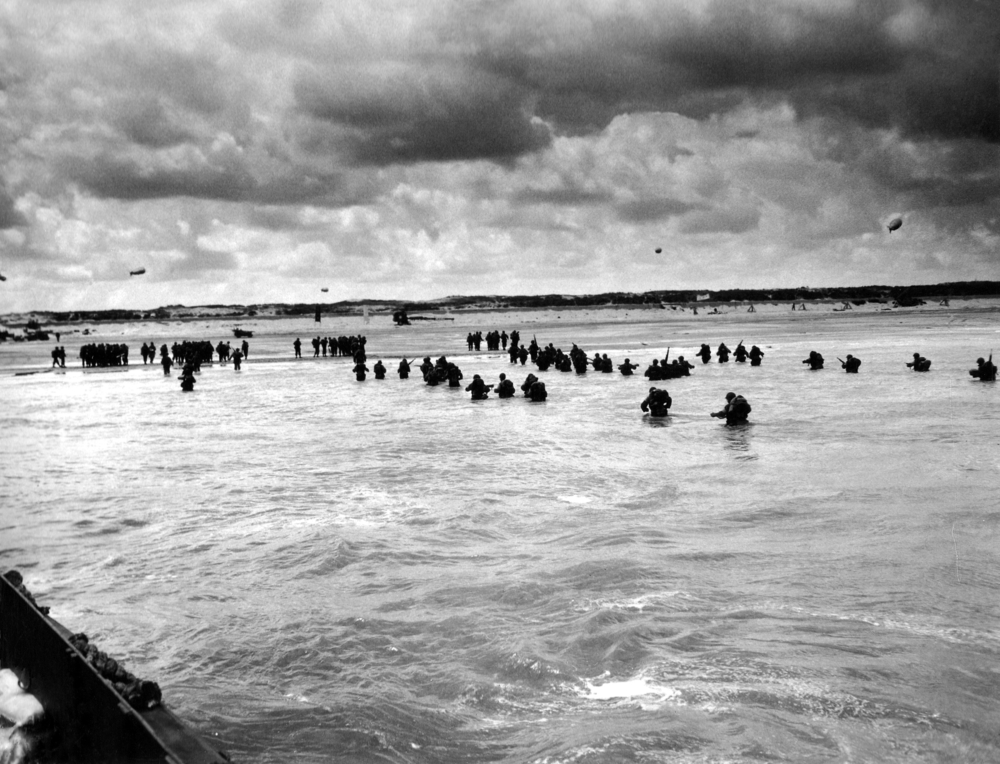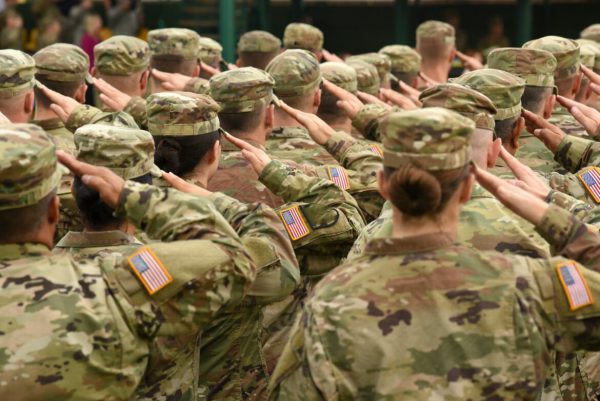Lambert was in the thick of the action during the invasion of North Africa, the attack on Sicily, and the landings on Normandy Beach.
In our recent visit with Chris Polek of Polek & Polek in Pine Brook, New Jersey, Chris was generous in his parting gifts, including a New York Giants stapler. It has a place of prominence on my desk. He also gave me a book, Every Man a Hero: A Memoir of D-Day, the First Wave at Omaha Beach, and a World at War by Ray Lambert and Jim DeFelice.
This is the story of a true American hero, Ray Lambert. As a member of the greatest generation, I believe Lambert provides a genuine example of being a man with deep integrity. As a lover of history, I have read several books about D-Day, but this one was special. It was the first I had read from the perspective of someone responsible for saving lives.
Lambert worked closely with Jim DeFelice as his co-author. DeFelice has outstanding credentials for helping veterans tell their stories. He is the co-author with former U.S. Navy Seal Chris Kyle of the bestseller American Sniper, which was made into a movie by Clint Eastwood. His other works include Omar Bradley: General at War, Rangers at Dieppe: The First Combat Action of U.S. Army Rangers in World War II, and West Like Lightening: The Brief Legendary Ride of the Pony Express. I don’t think there could be anyone better to help Lambert relay his experience. Reading the book reminded me of my uncle, Master Sergeant Michael Bruzzi, whose time in service and similar campaigns matched the subject of this memoir.
Arnold Ray Lambert was born in Alabama in 1920. He came from a family of farmers, and life, especially during the depression, was more than hard. Lambert joined the Army in 1940 as a 20-year-old farm boy with little experience except working as an assistant for a veterinarian. In looking over his record when enlisting, it was decided he would be a suitable candidate to serve in the Medical Corps. In the Army Infantry and the Marine Corps, those who serve in a medical detachment to a given unit are either medics or corpsmen.
Lambert’s story takes you through the invasion of North Africa in 1942, the attack on Sicily in 1943, and finally, the landings on Normandy Beach. Along the way, he tells the tale of how those campaigns were conducted by his unit, the famous “Big Red One.” Their official designation was the 16th Infantry Regiment.
Going into the invasion of North Africa, these brave young men wore a white armband with a red cross and a large cross on their helmets. They subsequently stopped identifying themselves in such a manner because the Germans believed that if they killed the Army Medics, it would dishearten the soldiers they cared for. Very few Army medics wore such symbols for the rest of the war.
Medics carried no weapons, although some did pack a side arm and a field medical kit. You might think that would make winning any decorations in combat hard. However, Lambert won a Silver Star in 1943 for running through German lines to save trapped men, one of the countless rescues he made in North Africa and Sicily.
He also received three Purple Hearts and could have had at least two more. He thought his wounds were too insignificant to put in for the medal. He also won a second Silver Star for helping men wounded by land mines, known as Bouncing Betties. This was a mine planted in the dirt that, when stepped on, fired a small charge at groin level in hopes of emasculating the victim. Taking care of those that were wounded by these devices took a great deal of courage.
After the Sicilian campaign, the 16th had been fighting for one year and thought they would be sent home. That was not the case. Instead, they were sent to England to retrain and refit. This was an easy time for Lambert, now a Staff Sergeant in charge of his medical unit. He was offered a Battlefield Commission and turned it down. “I did not want to leave my men,” he wrote. There is quite a different relationship with your men when you are a commissioned officer rather than a non-commissioned officer. Lambert wanted to say close to them.
He considered his medical unit the best in the Medical Department. In his book, he even listed the men in his unit. As a true leader, he even spoke about the replacements. He included his men because he understood nobody does anything alone.
The book details the Normandy Invasion and the horrors of war. Bravery, the likes of which civilians lacking military service will never be able to comprehend, was detailed minute by minute. This battle covers more than 60 pages of this 250-page book.
Lambert’s brother Bill was in the same unit and a medic too. As fate would have it, both men were wounded during the landing at Normandy and brought to a ship that had been converted to treat the wounded coming off the beach. Lambert and his brother woke up at the same time. Bill looked over and saw his brother. “What are you doing here?” he asked. “Same thing as you,” replied Lambert. “What’s mother going to think?” Bill asked.
The carnage on that day is hard to describe. The 1st Division had a 30% casualty rate in less than 48 hours. A reinforced division has approximately 20,000 men. Of that number, 2,400 paid the ultimate price. The total number of allied casualties in Normandy was 210,000, of which 37,000 ground forces lost their lives, plus 16,000 allied pilots and crews. The Lambert brothers returned home, and both had long convalescence periods.
The book has excellent depth and covers the home front and the war zone. Lambert speaks of his wife and child and recalls looking forward to the day that he returns home. If you are interested in what these men gave to save our way of life, do yourself a big favor and pick up a copy of Lambert’s book. You will gain incredible insight as to where our country was in 1940, and the incredible strength of the people who were asked to wage war and those who supported them at home and in combat.
The book is more than compelling, and I am so grateful to Chris Polek for giving it to me. It will hold a special place in the section of my library devoted to wars, military campaigns, and countless heroic stories.
I’ll conclude with a quote from, the seasoned author Jim DeFelice, who has written at least three books about American Heroes at war.
“How did a young man who never finished high school, who had been raised in small, rural communities, and who had never held an especially important, let alone-well-paying job, become in a few short months not only a hero but also a bona fide leader in the U.S. Army?”
Tom Brokaw aptly described men such as Ray Lambert as members of the greatest generation. We owe them all so much.
_________________________
To become a subscriber, visit www.thecannatareport.com/register or contact cjcannata@cannatareport.com directly. Bulk subscription rates are also available upon request and included in our media kit.





